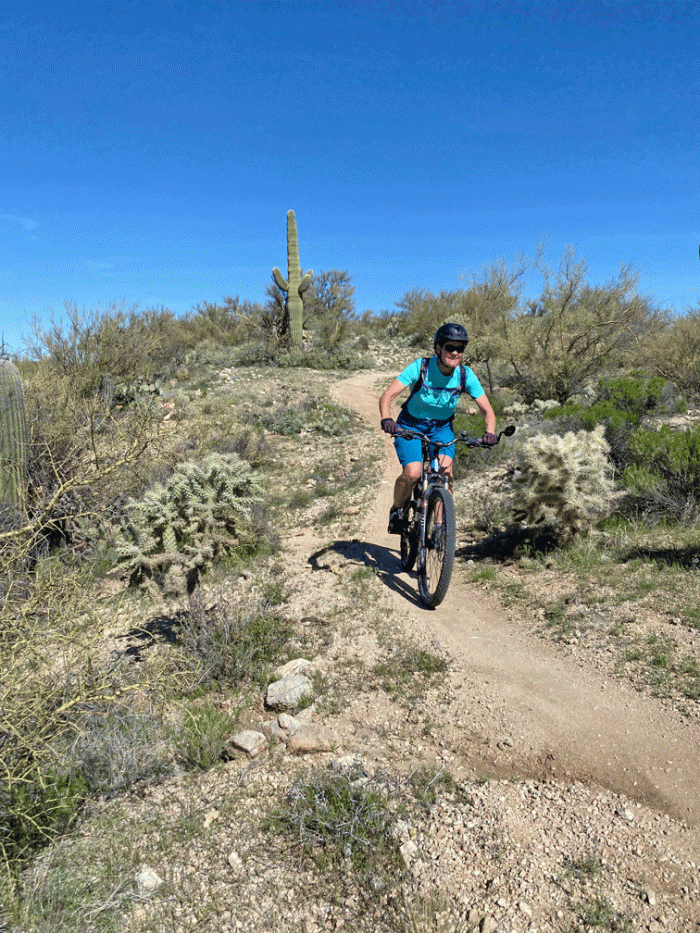We got back to mountain biking, after Wendy’s scraped knee healed and she purchased some knee pads. She hardly ever falls, but the knee pads are confidence boosters. We went farther than our first outing and covered over thirty kilometres in three and a half hours.
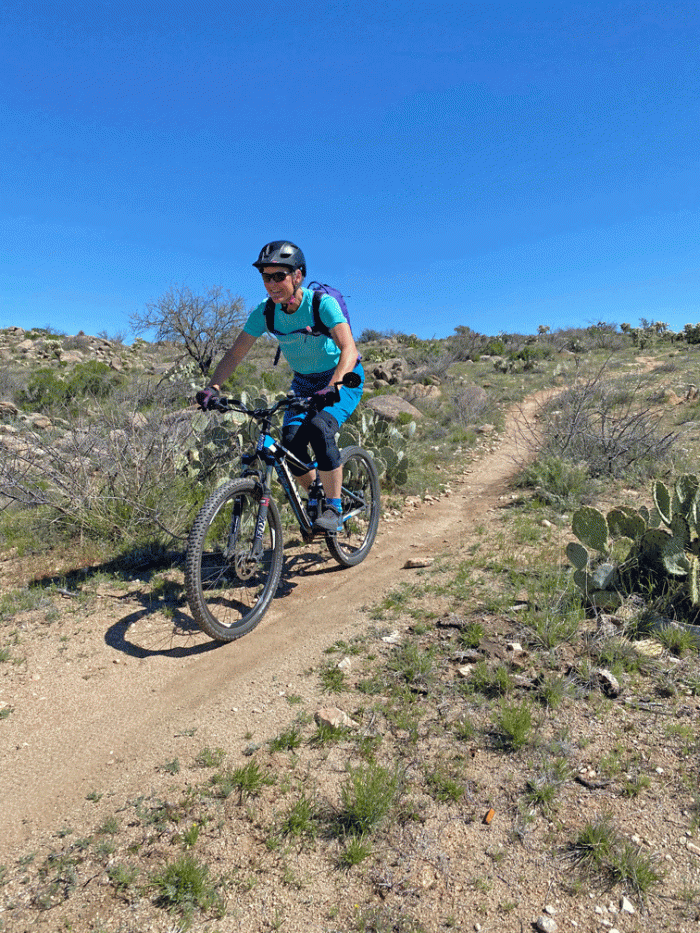
The next week we went out again, but turned around at the “big rocks” to make a twenty kilometre ride.
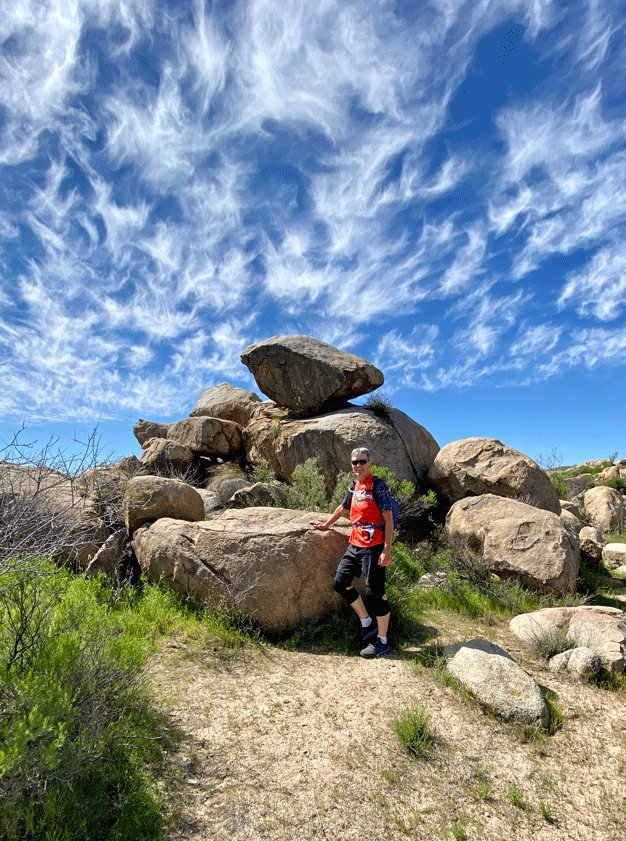
We’ve birded at El Rio Open Air preserve a number of times. Often the Black-crowned night herons are hidden in the branches. This time, a couple of them were more visible. This photo was taken through the scope.
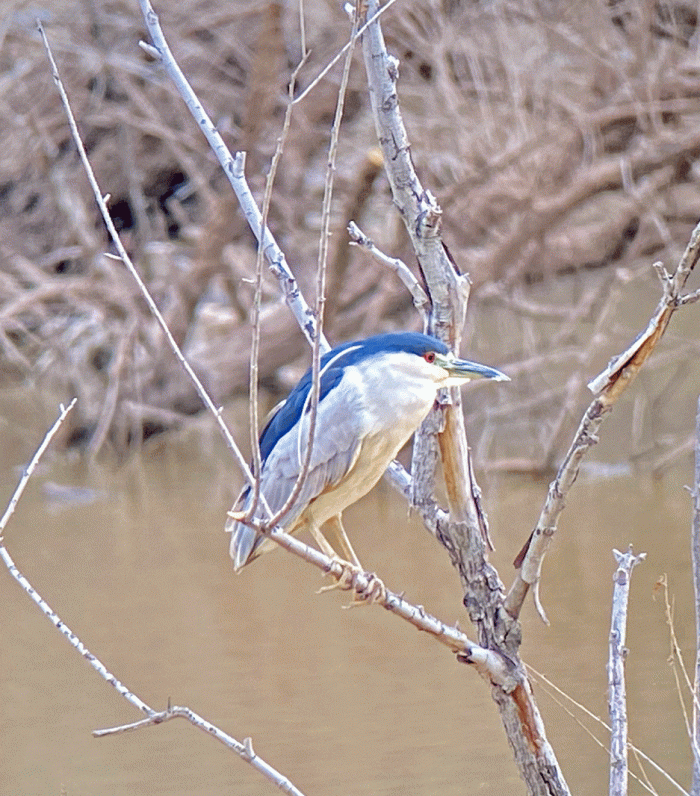
Doug spent some time at our place practicing with taking photos through the scope. Here’s an Inca dove, one of a half dozen that visit our feeder. These doves are very small (only 20 cm long) and have a beautiful scaly plumage pattern.
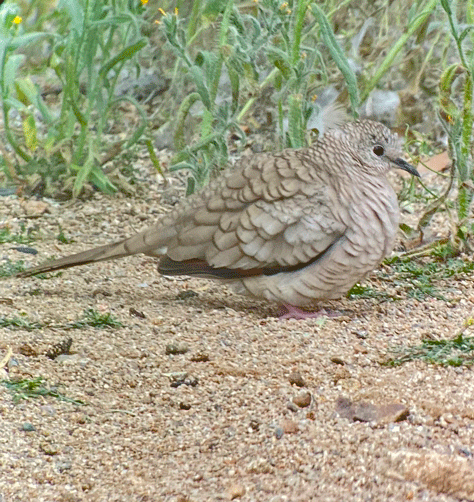
On a cooler day when rain was expected, we went birding at the Desert Museum. Many wild flowers were blooming, which made the cactus garden even more gorgeous.
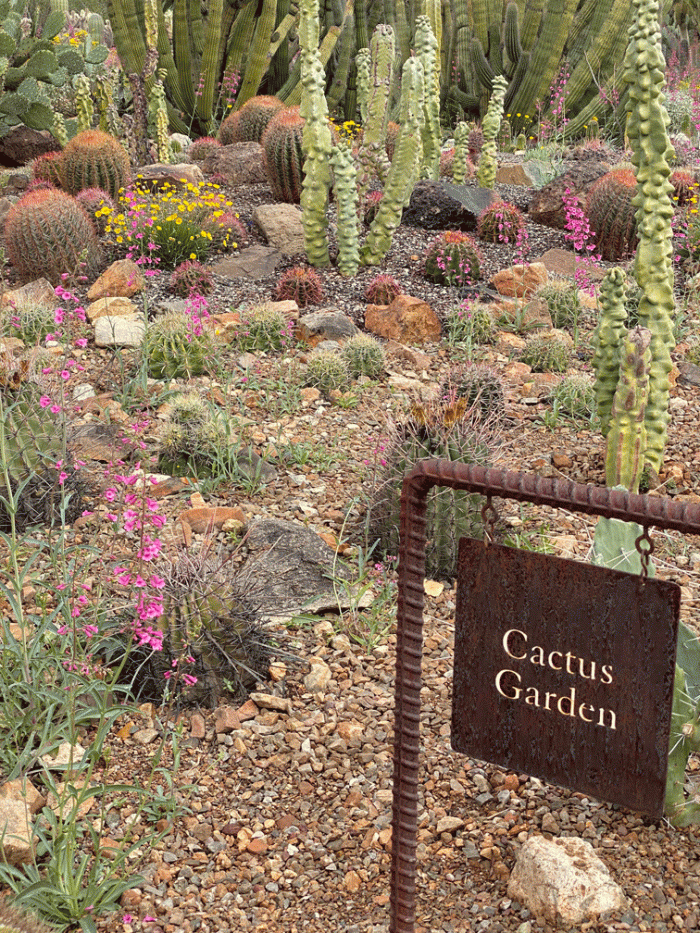
Here are some desert bluebells among the hedgehog cactuses.

The desert museum had a very good specimen of desert honeysuckle. Hummingbirds love these flowers.
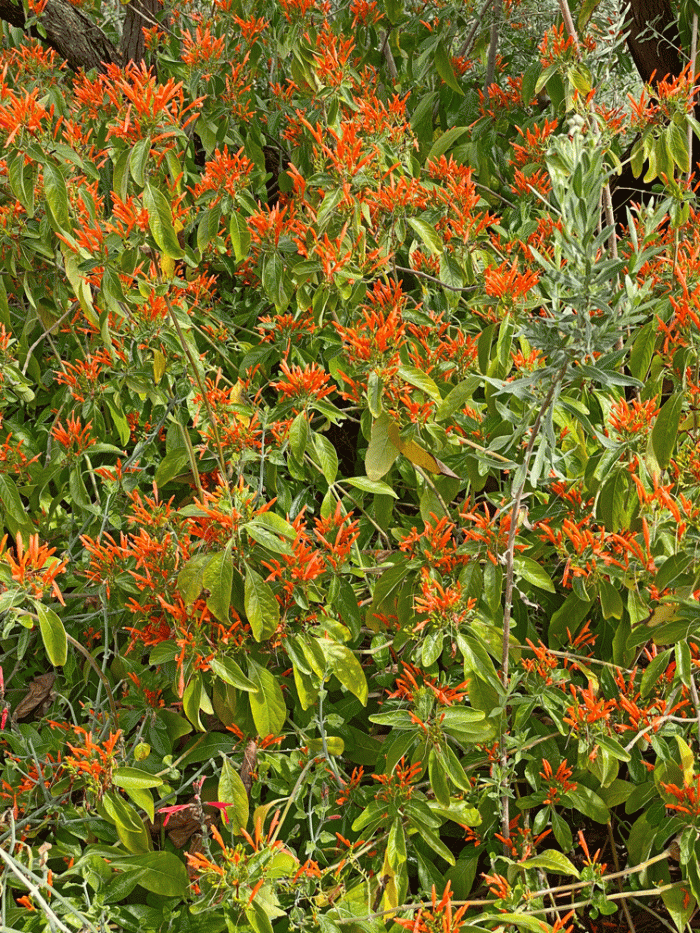
We hiked again in the section of Saguaro National Park that is really close to us. This time we headed up some trails we had hiked before. This photo of the pink penstemon was taken on a wash beside the Ringtail trail.

There are a myriad of trails in this area that allow a hiker to make different loops. This time we went over to the Gila Monster trail. A Gila monster is a kind of lizard, but we didn’t see any. We knew when we started hiking that rain was in the forecast, but we hoped we would get home before it started. This photo was taken moments before we felt sprinkles. It was windy and damp for about twenty minutes, but we only needed to put on our wind jackets to be comfortable. We dried off by the time we got back to the truck.
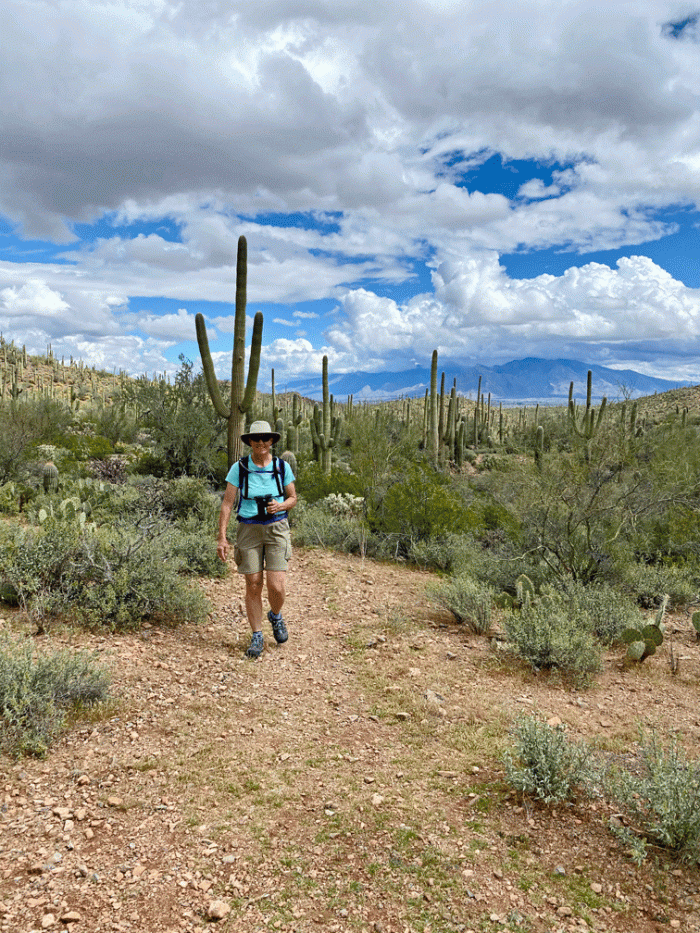
The next day, we set our alarm for 6, because we wanted to go birding at Madera Canyon, an hour drive away. The leftover clouds from the rain the night before made for a spectacular sunrise.
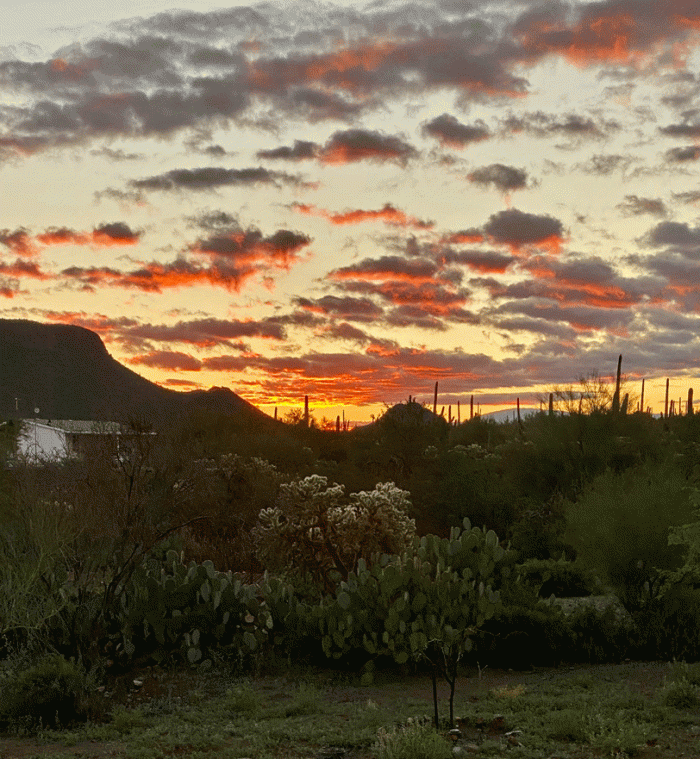
By the time we got to Madera Canyon, the sky was clear. We parked at Proctor Road and hiked on the paved trail.
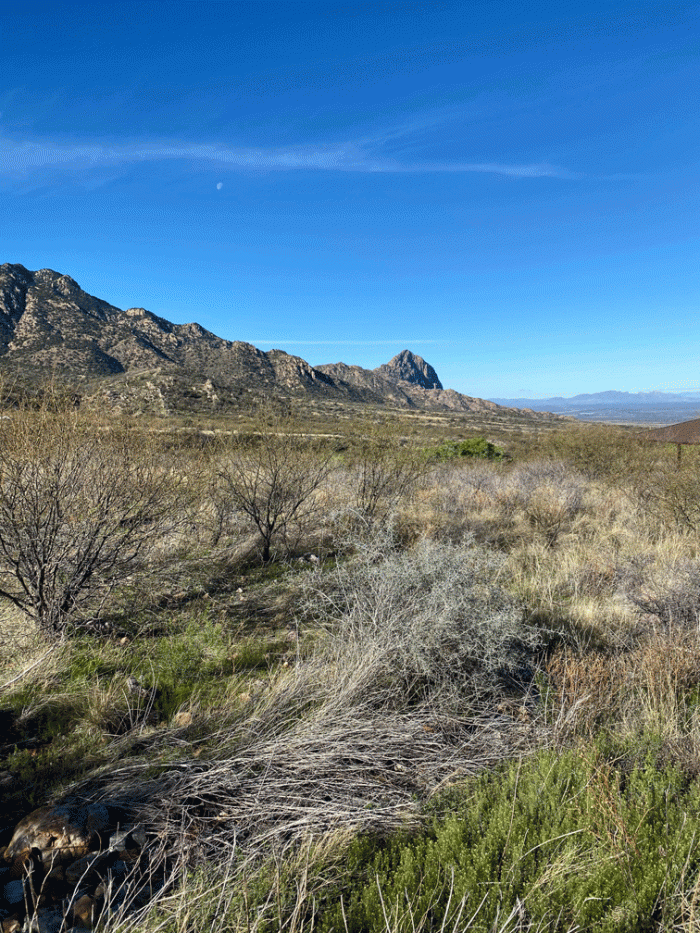
About five minutes from the parking lot, we heard the Northern beardless-tyrannulet, a bird we had been hoping to see. It flitted around as flycatchers will, but it finally perched long enough on a sunlit branch for Doug to get this photo. It’s unfortunate that it didn’t perch a few centimetres lower, so it’s head was not blocked by the branch, but we were happy to have this good of a view of such a small bird. (Only 11 cm long.) It also has a very limited range in the US. A life-bird for us!

Later that afternoon, we had good views of a Yellow-eyed junco.
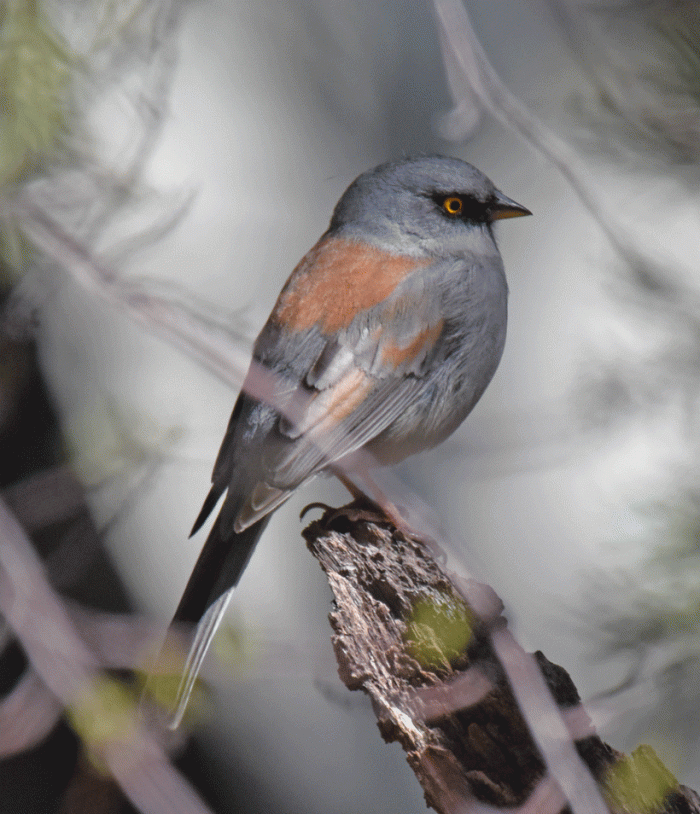
On the way home from Madera Canyon we stopped by Canoa Ranch Conservation Area, to see if there was anything interesting. We saw a lot of the same birds that we had seen the last time. Doug is looking through the scope at some Ruddy ducks, a pair of Ring-necked ducks and one Bufflehead. Madera Canyon is in the mountains in the background of the photo.

A few days later, we returned to Madera Canyon. We really wanted to see an Elegant trogon. There was one male in the area that fed on the red berries of the pyracantha bush. He had come to the bush in the morning on the previous two days, so there was a crowd expecting his arrival. The photo below shows some of the people on the road. We were practicing social distancing, so kept a lookout from the trail below. Unfortunately, he didn’t show up that morning.

We walked up to the Santa Rita Lodge gift shop, where they have over a dozen feeders. We had a quick look at the feeders and the surrounding area. Doug got a good photo of an Arizona woodpecker, another bird that has a very limited range in the US.

After lunch, we went back to check out the pyracantha bush and were rewarded with a view of a male Hepatic tanager.

The next day, we found another great area for hiking in the Tortolita Mountains. Pima County maintains the trails and provides signage and maps.
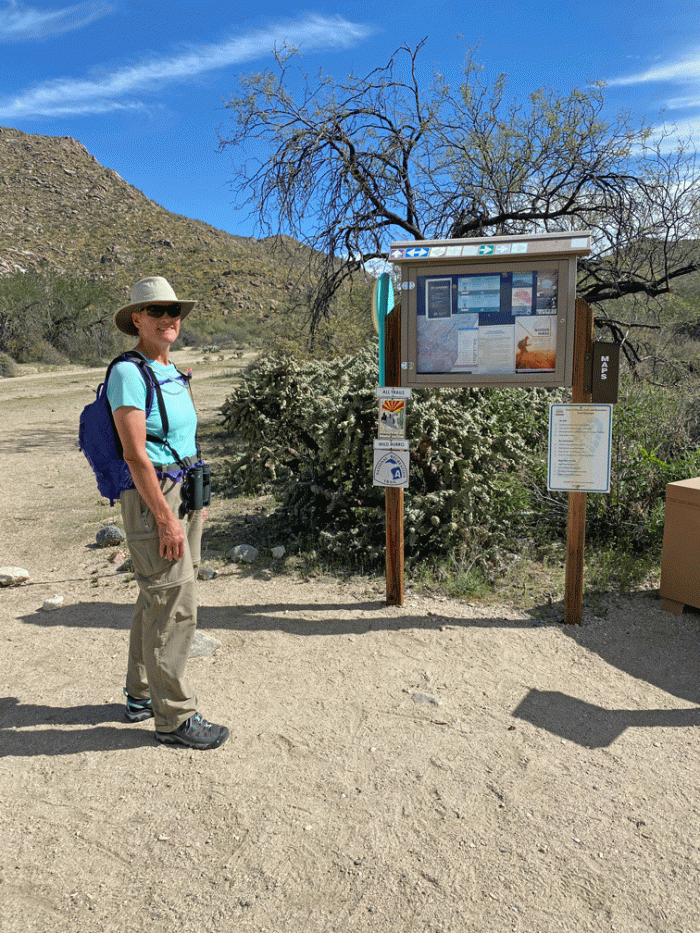
We chose to follow the Alamo Springs trail out of the wash and up along a ridge.

There were plenty of wildflowers and cacti to look at.

It was an excellent trail through interesting terrain.

This rock formation is nick-named “Machu Picchu,” because it looks like it is a man-made structure. After we read the information board, we took a rest on the nearby bench.
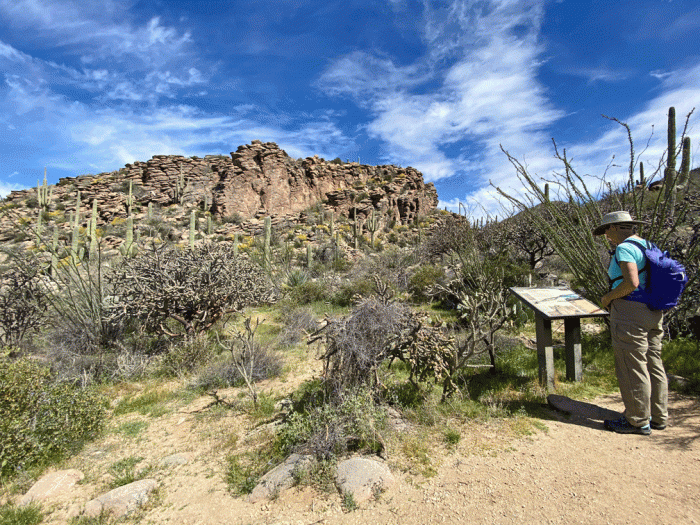
We didn’t walk all the way to Alamo Springs, instead we went down the spur trail to the valley bottom and walked along the wash back to the trailhead.
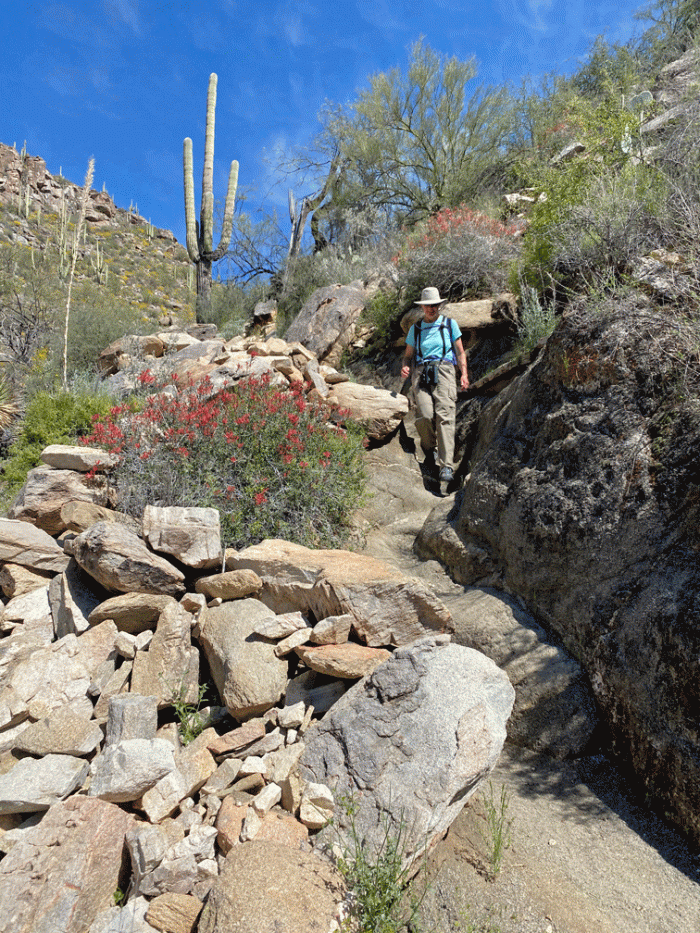
On our last day in Tucson, we went birding at Sweetwater wetlands. The maintenance crew had cleared the edges of the ponds which made it easier to see the birds that like to hide in the reeds. Doug is taking a photo with his iPhone through the scope of a rare and hard to see bird known as …
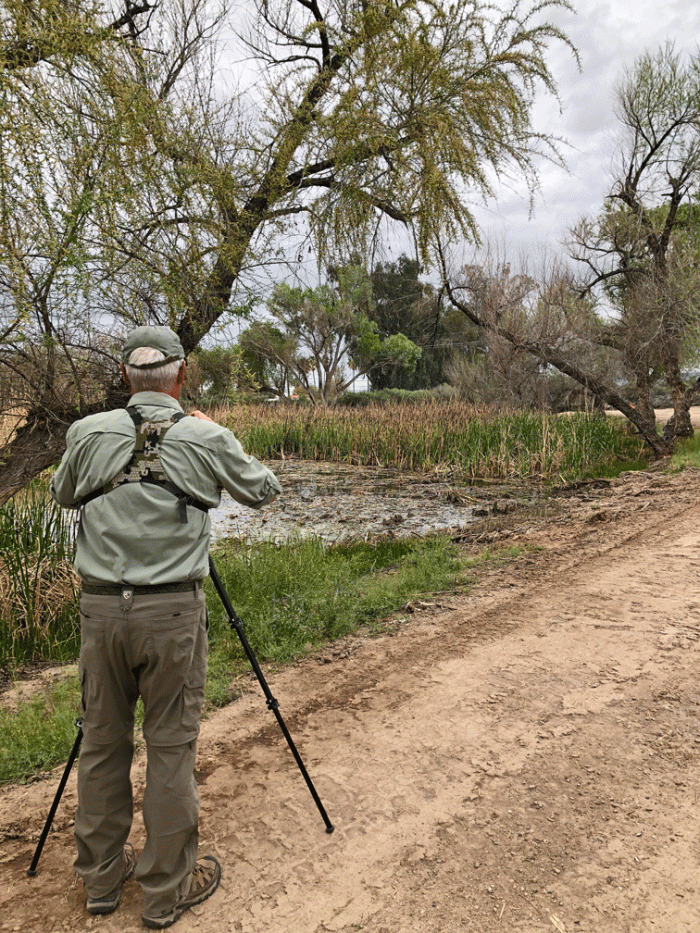
… an American bittern! You might not see it at first glance.
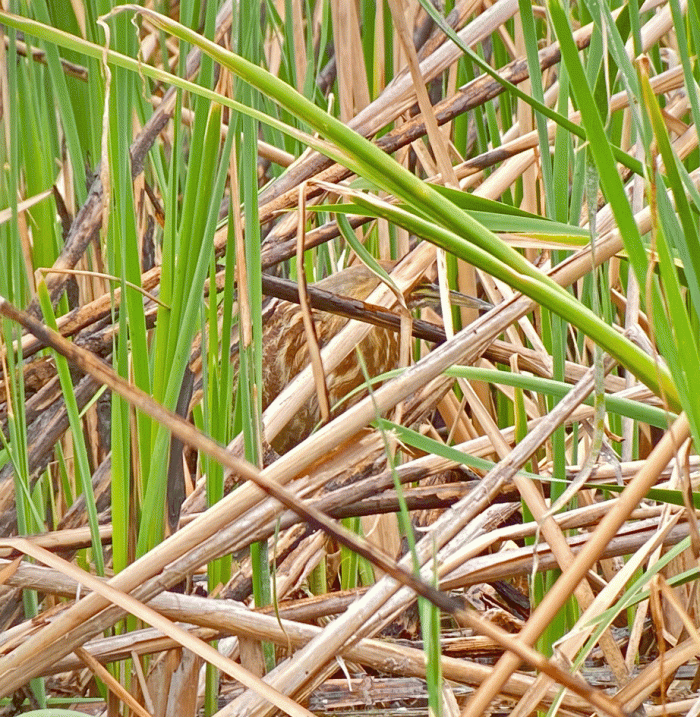
That afternoon we reorganized the trailer to make it ready to move. We were reluctant to leave the beautiful weather of Arizona, but it became clear that our best place during the coronavirus pandemic was at home in Canada.
The next morning, after some fancy manoeuvres, we were out through the narrow gate and on our way. We drove north and sailed through Phoenix and Las Vegas because there was less traffic than average. At 6:30, we found a spot for the night in the Walmart parking lot in Mesquite, NV.
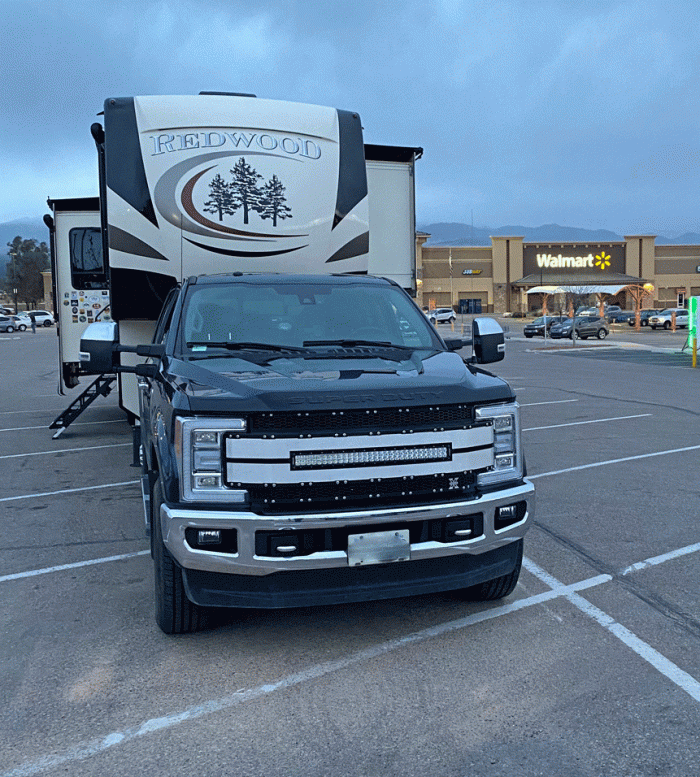
The next day, we drove twelve hours to make it to Dillon, Montana. We got home on the third day of nine hours. Before we could park the Redwood, Doug needed to get out the quad and plow to clear a space in our regular parking area. It had not been plowed all winter, because we were expecting to get home after everything had melted. Here’s a view of the trailer with the car beside it. Wendy uses the car to move the food from the refrigerator to the house.
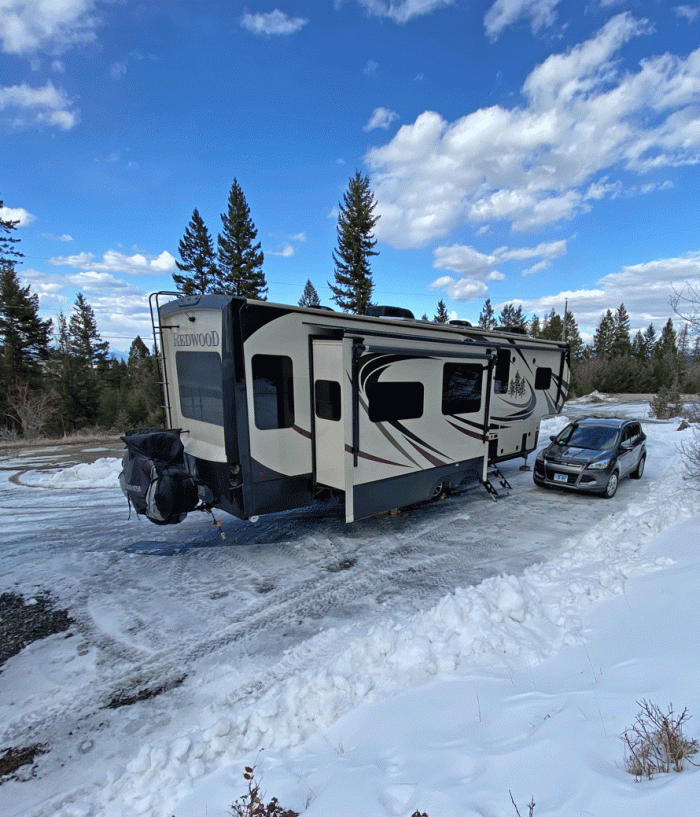
We’re home now and doing our fourteen day self-isolation. We hope to be out in the trailer in June. Until then, keep safe and stay healthy.


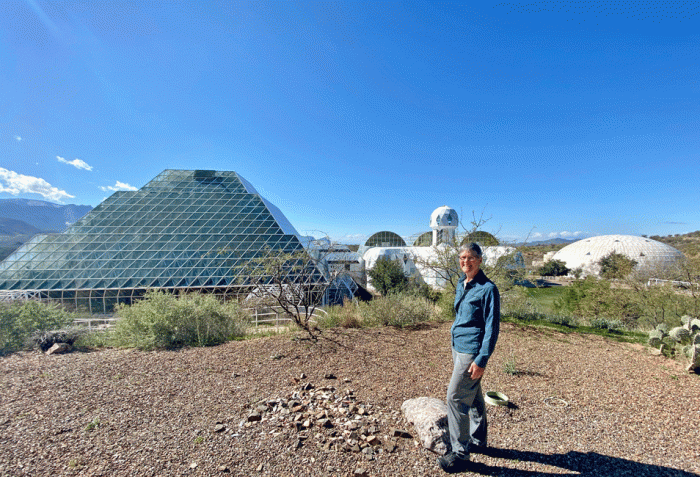
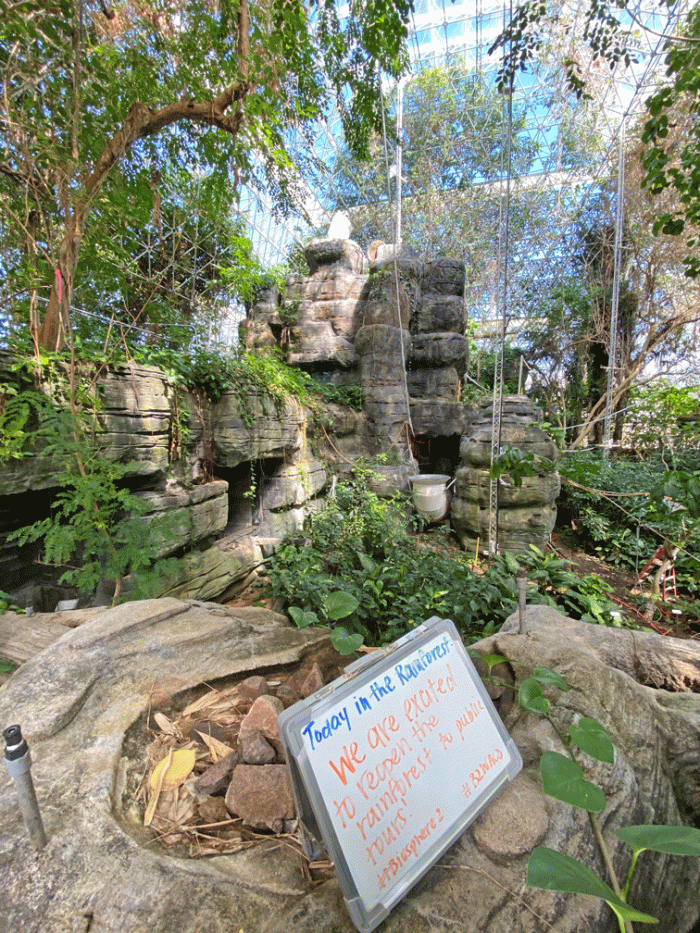
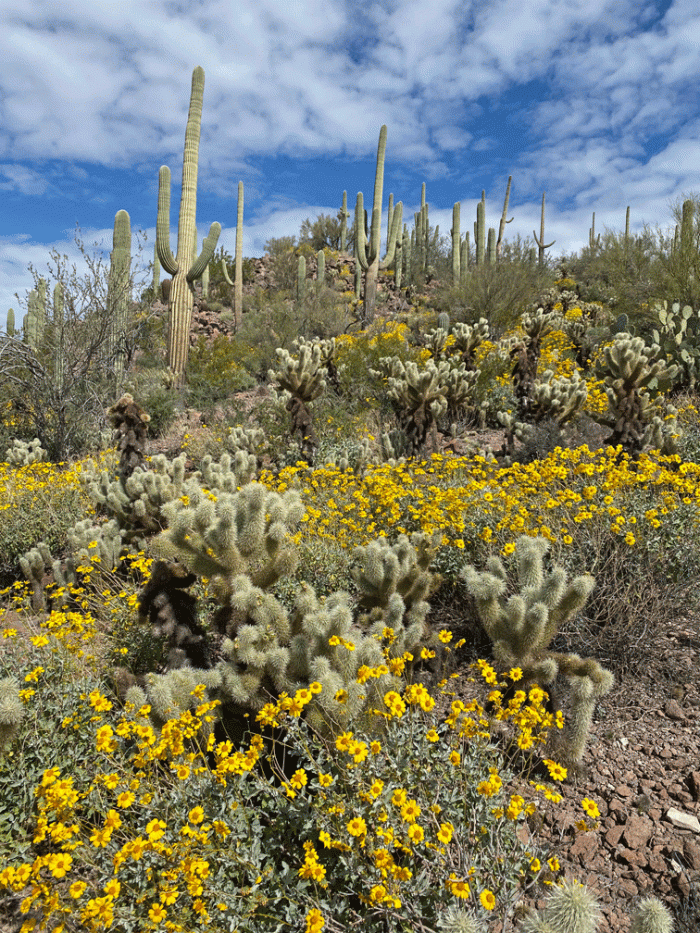

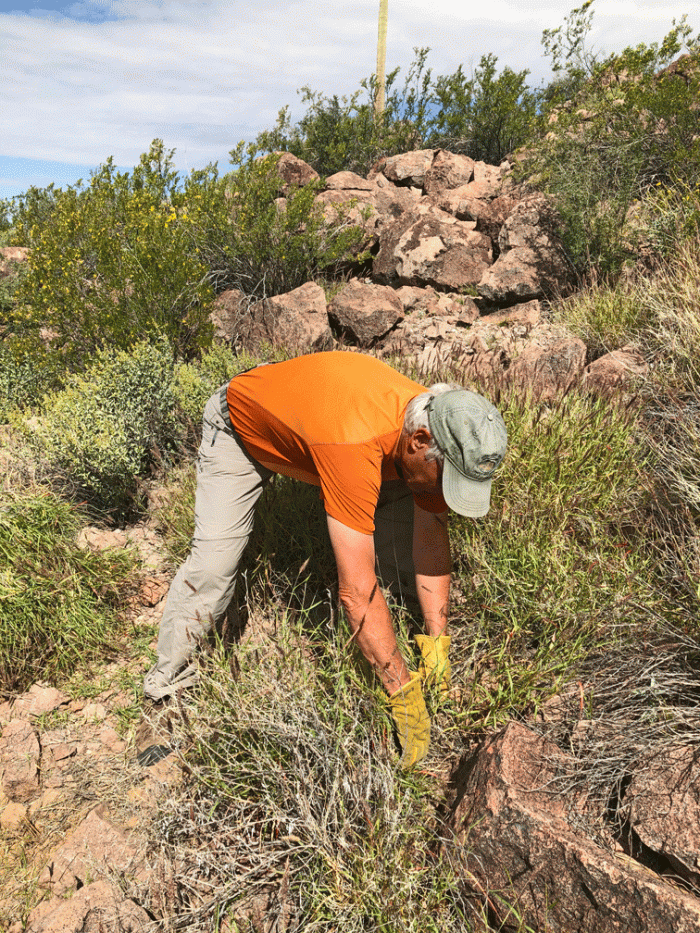



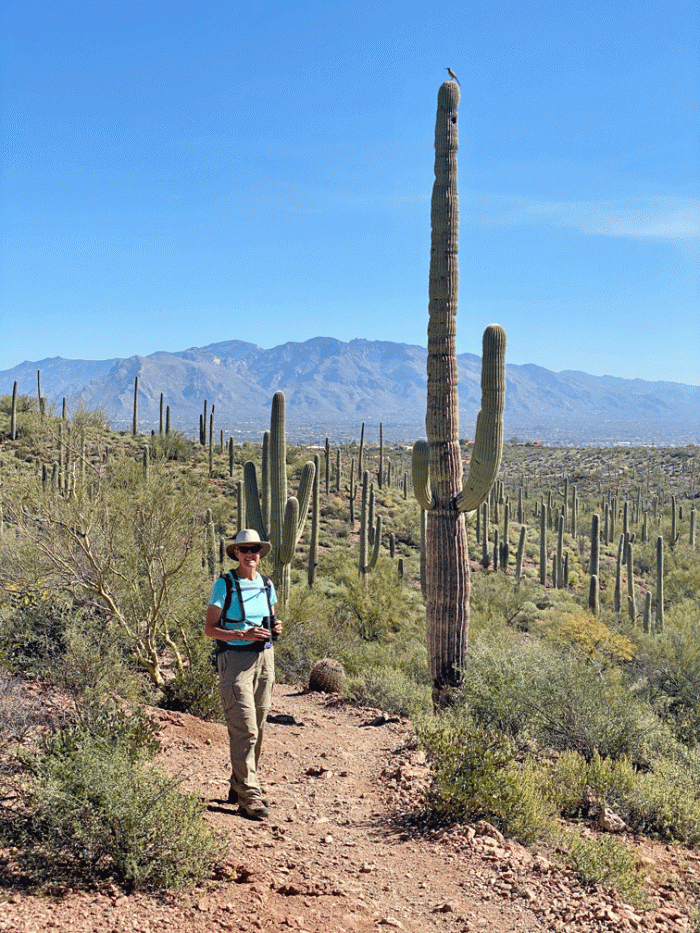
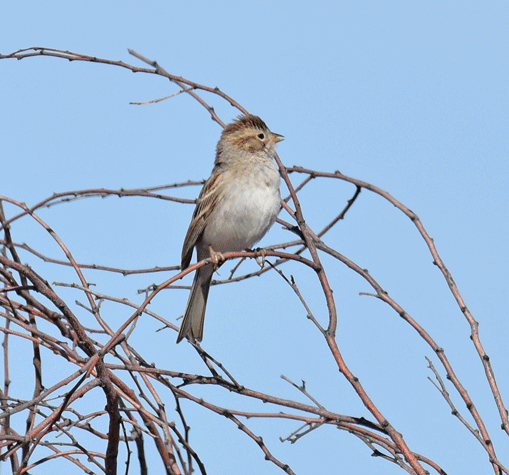


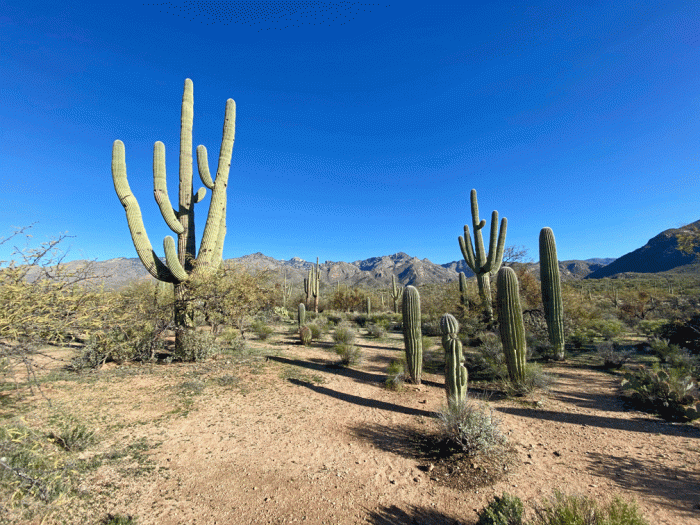




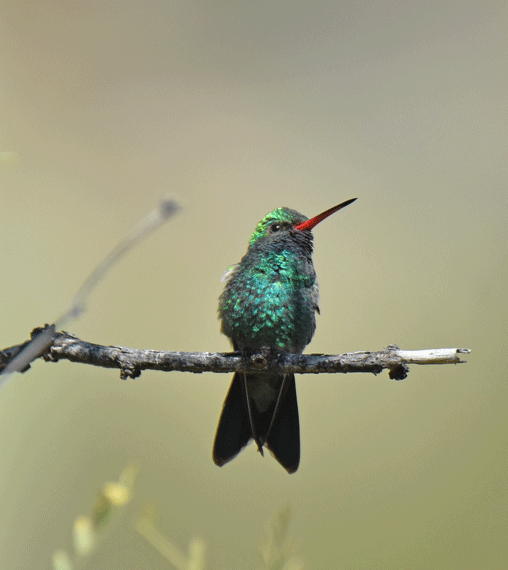




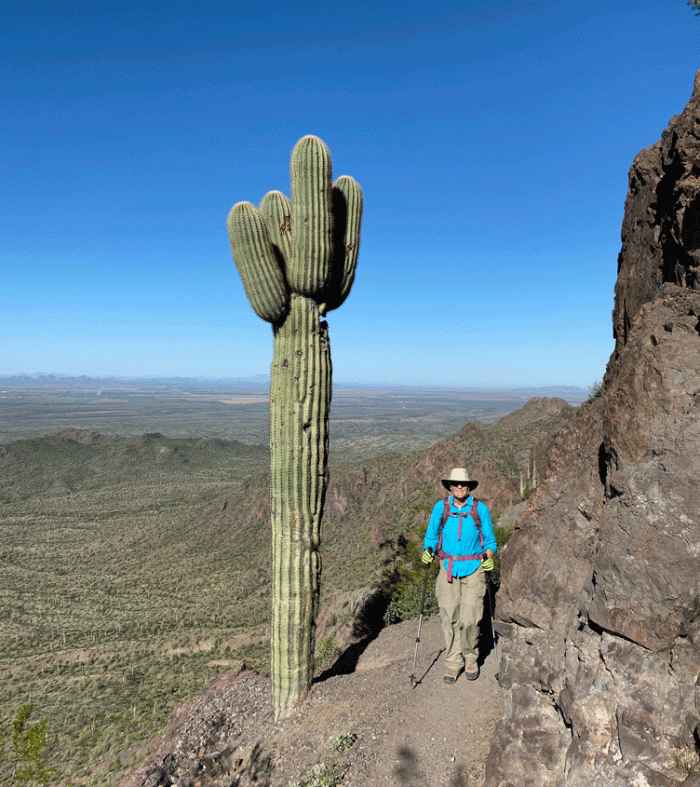


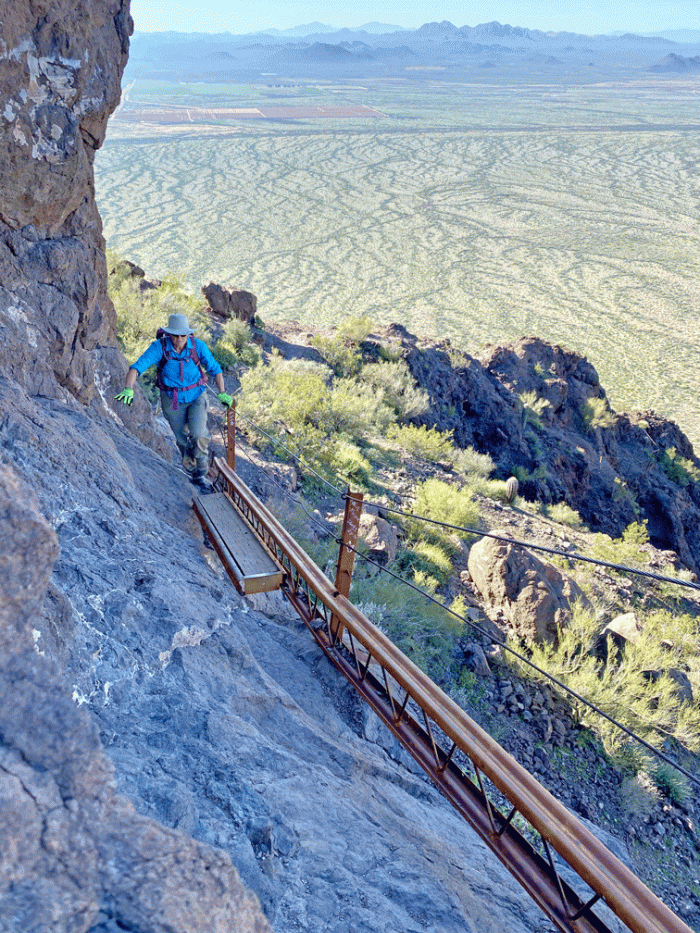
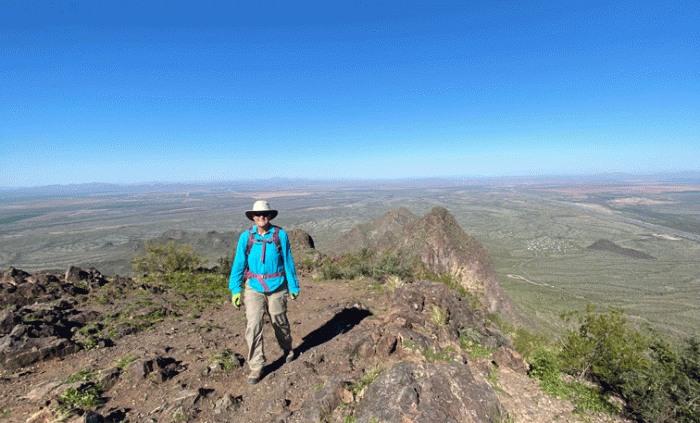 On our way down, we met many people ascending, but we only had to wait at one of the “one-way only” sections.
On our way down, we met many people ascending, but we only had to wait at one of the “one-way only” sections.


